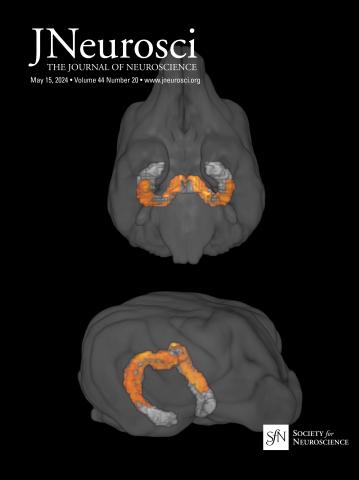Heterogeneous effects of cognitive arousal on the contrast response in human visual cortex.
IF 4.4
2区 医学
Q1 NEUROSCIENCES
引用次数: 0
Abstract
While animal studies have found that arousal states modulate visual responses, direct evidence for effects of arousal on human vision remains limited. Here, we used fMRI to examine effects of cognitive arousal on the gain of contrast response functions (CRFs) in human visual cortex. To measure CRFs, we measured BOLD responses in early visual cortex (V1-V3) while participants (n=20, 14 females and 6 males) viewed stimuli that parametrically varied in contrast. To induce different cognitive arousal states, participants solved auditory arithmetic problems categorized as either Easy (low arousal) or Hard (high arousal). We found surprising diversity in the modulatory effects across individuals: some individuals exhibited enhanced neural response with increased arousal, whereas others exhibited the opposite effect - a decrease in response with increased arousal. The pattern of overall BOLD modulation showed within-individual stability and was correlated with the degree of arousal-driven change in pupil size. Individuals who exhibited larger increases in pupil size with the arousal manipulation tended to show greater arousal-related decreases in visuocortical responses. We speculate that the polarity of the modulatory effect by cognitive arousal may relate to individual differences in cognitive effort expended in the high-difficulty condition, with individuals reaching different points on an underlying non-monotonic function.Significance Statement While animal work suggests that arousal state has a profound impact on visual processing, the effects on human vision remain less understood. Here we assessed the influence of cognitive arousal on the neural gain of visual responses in humans to better characterize the mechanisms by which arousal affects vision. Minimal modulation was observed at the group level, but closer examination revealed substantial variability in modulation across individuals, with some showing enhancement and others exhibiting a decrease in neural modulation of visual responses with high arousal. Changes in pupil size correlated with neural modulation, suggesting a non-linear inverted-U relationship between cognitive arousal and visual processing. These results provide evidence of arousal's differential impact on vision across individuals.认知觉醒对人视觉皮层对比反应的异质效应。
虽然动物研究发现唤醒状态调节视觉反应,但唤醒对人类视觉影响的直接证据仍然有限。在此,我们使用功能磁共振成像(fMRI)研究了认知唤醒对人类视觉皮层对比反应功能(CRFs)增益的影响。为了测量CRFs,我们测量了早期视觉皮层(V1-V3)的BOLD反应,而参与者(n= 20,14名女性和6名男性)则观看了参数变化的刺激。为了诱导不同的认知唤醒状态,参与者解决了分为简单(低唤醒)和困难(高唤醒)的听觉算术问题。我们发现个体间调节作用的多样性令人惊讶:一些个体表现出神经反应随着觉醒的增加而增强,而另一些则表现出相反的效果——随着觉醒的增加而反应减弱。整体BOLD调节模式在个体内表现出稳定性,并与唤醒驱动瞳孔大小变化的程度相关。在唤醒操作下瞳孔增大较大的个体在视觉皮层反应中表现出更大的与唤醒相关的减少。我们推测,认知觉醒调节效应的极性可能与个体在高难度条件下认知努力的差异有关,个体在潜在的非单调函数上达到不同的点。虽然动物实验表明觉醒状态对视觉处理有深远的影响,但对人类视觉的影响尚不清楚。在这里,我们评估了认知唤醒对人类视觉反应的神经增益的影响,以更好地表征唤醒影响视觉的机制。在组水平上观察到最小的调制,但更仔细的检查显示,个体之间的调制存在实质性差异,一些人表现出视觉反应的神经调节增强,而另一些人则表现出高唤醒时视觉反应的神经调节减弱。瞳孔大小的变化与神经调节相关,表明认知唤醒和视觉处理之间存在非线性倒u型关系。这些结果为不同个体的觉醒对视觉的不同影响提供了证据。
本文章由计算机程序翻译,如有差异,请以英文原文为准。
求助全文
约1分钟内获得全文
求助全文
来源期刊

Journal of Neuroscience
医学-神经科学
CiteScore
9.30
自引率
3.80%
发文量
1164
审稿时长
12 months
期刊介绍:
JNeurosci (ISSN 0270-6474) is an official journal of the Society for Neuroscience. It is published weekly by the Society, fifty weeks a year, one volume a year. JNeurosci publishes papers on a broad range of topics of general interest to those working on the nervous system. Authors now have an Open Choice option for their published articles
 求助内容:
求助内容: 应助结果提醒方式:
应助结果提醒方式:


